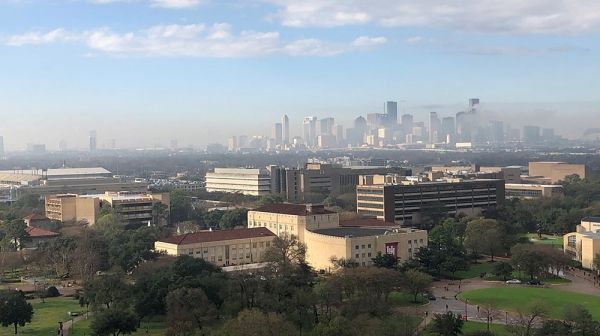The 2021–2022 TRacking Aerosol Convection interactions ExpeRiment (TRACER) aims to collect data on the evolution of convective clouds and the environment at locations around Houston, Texas. Scientists from Brookhaven National Laboratory are collaborating with the University of Houston (foreground) and other partners using instrumentation from the U.S. Department of Energy's Atmospheric Radiation Measurement (ARM) user facility.
A team of atmospheric scientists from around the nation is descending on the Houston, Texas, area for the next 14 months to seek answers to a vexing question: Do tiny specks of soot, dust, smoke, and other particles suspended in Earth’s atmosphere help determine the severity of thunderstorms? The knowledge gained may make weather forecasts more accurate and provide crucial data for improving predictions about how aerosols may affect Earth’s future climate.
The Houston deployment will also provide detailed data on local air quality. As an extensive field study in a metropolitan area, it will give scientists a unique opportunity to explore the effects of industry, vehicle emissions, and the built environment on weather and climate.
Continue reading at Brookhaven National Laboratory
Image via Brookhaven National Laboratory


